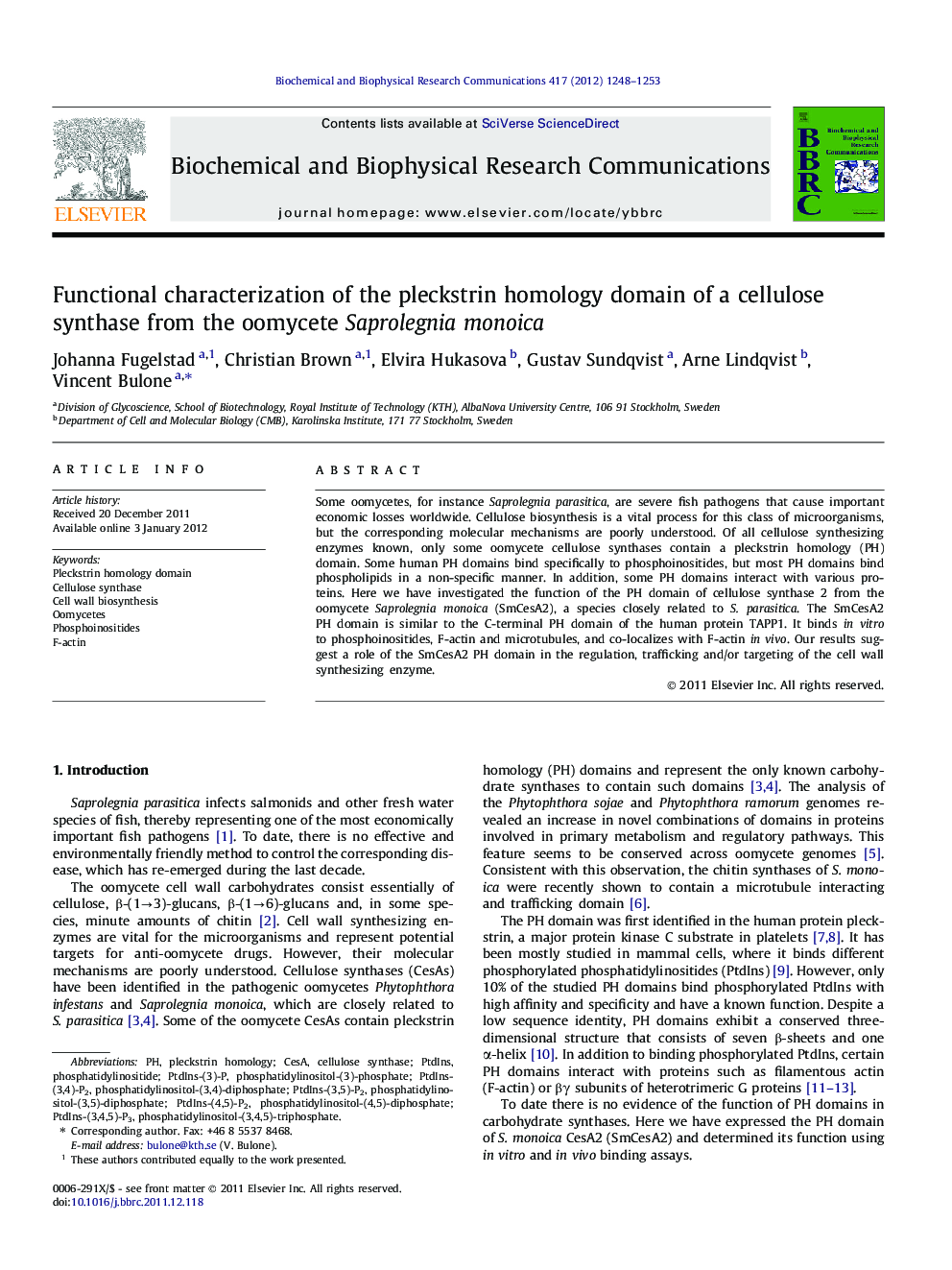| Article ID | Journal | Published Year | Pages | File Type |
|---|---|---|---|---|
| 1930235 | Biochemical and Biophysical Research Communications | 2012 | 6 Pages |
Some oomycetes, for instance Saprolegnia parasitica, are severe fish pathogens that cause important economic losses worldwide. Cellulose biosynthesis is a vital process for this class of microorganisms, but the corresponding molecular mechanisms are poorly understood. Of all cellulose synthesizing enzymes known, only some oomycete cellulose synthases contain a pleckstrin homology (PH) domain. Some human PH domains bind specifically to phosphoinositides, but most PH domains bind phospholipids in a non-specific manner. In addition, some PH domains interact with various proteins. Here we have investigated the function of the PH domain of cellulose synthase 2 from the oomycete Saprolegnia monoica (SmCesA2), a species closely related to S. parasitica. The SmCesA2 PH domain is similar to the C-terminal PH domain of the human protein TAPP1. It binds in vitro to phosphoinositides, F-actin and microtubules, and co-localizes with F-actin in vivo. Our results suggest a role of the SmCesA2 PH domain in the regulation, trafficking and/or targeting of the cell wall synthesizing enzyme.
► Cellulose synthases of pathogenic oomycetes contain pleckstrin homology domains. ► Carbohydrate synthases from oomycetes are multifunctional proteins. ► Oomycete pleckstrin homology (PH) domains bind F-actin in vitro and in vivo. ► Oomycete PH domains bind phosphoinositides. ► Oomycete PH domains are involved in the regulation of cell wall biosynthesis.
